July 12, 2023 | CBC Le Téléjournal (French)
Undergrad summer student research positions explored
The following is part of a series introducing CivMin’s undergraduate summer students to the Department and our greater community.
We explore the students’ projects, motivation and challenges, while providing insights into who they are, and what motivates them, beyond academia. It also highlights the multitude of ways summer research opportunities are approached and implemented under the guidance of our industry-leading CivMin professors.
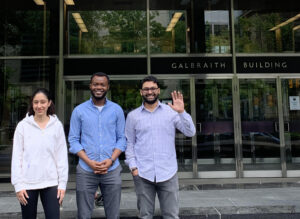
Civil Engineering undergraduate students Noureen Abdelhalim and Abdul Moiz Syed both took an interest in material science after taking Professor Ibrahim Ogunsanya’s CIV209 – Civil Engineering Materials class. Both are now diving deeper into this area as research students in CivMin this summer, under the supervision of Prof. Ogunsanya. Though they have differing career aspirations, they share a deep appreciation for the importance of materials – a part of engineering often overlooked and forgotten about.
Tell us a bit about yourself.
Noureen Abdelhalim: I’m going into my third year of Civil Engineering at U of T and I’m from Vaughan.
Abdul Moiz Syed: I’m going into my fourth year of Civil Engineering. I was originally born in Saudi Arabia, came here for grade four and have been here ever since.
What will be your role this summer and where? What types of tasks and work will you be doing? And what is the research goal?
Noureen: I’m working with Mohi [PhD candidate Mohaddeseh Abdolhosseini] who’s researching pitting corrosion [a localized form of pitting in which cavities or holes are produced in materials]. Corrosion can occur in areas with excess salt, such as on roads or near oceans. I’m assisting with her pitting corrosion modelling by reading through various existing articles and lectures on the topic, extracting information and summarizing it for her to use in her report.
Abdul: My research has to do with predicting the service life of concrete structures. All these built structures – bridges, dams and buildings – contain steel rebar [reinforced bar], a crucial component of any concrete structure. I’m working with a Master’s student, Nicolas Maamary [MASc candidate], to develop a machine learning model to predict the critical chloride threshold of these structures. Essentially, we’re creating a model in which several parameters are input, such as the composition of concrete and pH level, and the machine learning algorithm will consider previous experiments to determine how much chloride the structure can take before it starts to corrode.
What motivated you to work with Prof. Ogunsanya on this project?
Noureen: We have something [at U of T] called PEY Co-op. It’s not necessary to do during your second year summer, but I wanted to explore the types of jobs I could apply for and one of them was research. Being in Prof. Ogunsanya’s [Civil Engineering Materials] class, I became very interested in the materials research area within structural engineering. While most people often overlook the materials aspect of engineering, it was something I found myself very interested in exploring. Working with Prof. Ogunsanya, I get to research something I’m interested in, complete my co-op and work in the higher education environment that I’ve always been intrigued by.
Abdul: My motivation for this summer’s research stems from my engineering philosophy – if I want to design or build structures at any point in my career, I need to know everything about them, including the materials I’m working with. The most common material in construction is concrete and the vast majority of structures we build are made with concrete, which must be reinforced so it doesn’t give way to tension. As I pursue a career in a design firm or anything like that, I’ll know more than the guy in front of me – I’ll know the basis of what I’m talking about.
What do you foresee being the greatest challenge?
Noureen: My greatest challenge has been immersing myself in this academic, higher education environment. Reading research papers written by people who have PhDs, or are working towards their PhDs, is definitely a bit overwhelming at first. Every paper has its own jargon and terminology. Learning what one particular person is saying within their paper and applying your background knowledge to understand it can be challenging, but also very rewarding. Even though I’ve only been working on this research for a while, I feel so much more knowledgeable on the topic.
Abdul: As civil engineers, we don’t learn much about coding and machine learning, making this a completely new field I’m immersing myself in. I’m glad to have this experience because it combines civil engineering, which I’m passionate about, with artificial intelligence and technology, a rapidly developing and increasingly relevant area. Learning different coding languages and the different processes I’ll need to go through is the greatest challenge I’ll face.
Have you found any favourite spots on campus?
Noureen: I have this down to a science now. There’s spots you go between classes and there’s spots you go after class. Between classes, I’m usually in the Galbraith or Sandford Fleming buildings. I like the Engineering & Computer Science Library and Gerstein Library. For after class, my greatest discovery has been Robarts Common. The study space is good if you want to work with friends or enjoy working with white noise in the background.
Abdul: The second floor of Bahen Building, overlooking what used to be the Cube [closed cafe on the ground floor lobby area]. It’s perfect. You have a nice view, you can be as loud as you want, you can be as quiet as you want [if you put on headphones], you can eat there and it’s quiet enough to get your work done. Anytime I have work to do or have time on campus, I’m there.
Do you have any interesting hobbies you’d like to share?
Noureen: The main sport I did growing up was swimming; I was also a swimming instructor. I’ve always been interested in being a teacher or mentor of some sort.
Abdul: I enjoy biking and food, that’s about it.
Prof. Ogunsanya has some questions for Noureen and Abdul:
How do you combine your reserved nature with what is required of being a teacher?
Noureen: I’m an introverted extrovert. I like talking a lot, especially if it’s something I’m passionate about or know a lot about. In the context of teaching, I hope it’d be a topic I know a lot about, so I’d be completely fine.
In five to 10 years what do you hope to be doing, regardless of the path you choose?
Abdul: It’s difficult for me to say, because I have a lot of varying interests. Until second year, I was sure I was going to pursue something structural-related in a design firm. Then, I discovered material science, geotechnical engineering, transportation engineering and municipal systems. In third year, everything goes from monotone to a world of possibilities. I don’t have a proper answer. I’ll see where my interests take me as I go.
Questions for Prof. Ogunsanya:
What do you hope for Noureen and Abdul to achieve this summer? Takeaways?
Prof. Ogunsanya: People often ignore the material science aspect of many design fields. There’s a focus on designing or using the materials but the fundamentals are often missing. I teach CIV209,which deals with the fundamentals of material, applicable to Civil Engineering students. My goal is to help Noureen and Abdul understand the ignored part of being an engineer – the material itself.
I want to help them see the problems we’re trying to solve, from the micro level to the big picture. In our case, we’re trying to make reinforced concrete structures more sustainable and durable. If we can achieve this, then we’ve solved some problems associated with infrastructure greenhouse emission and safety. So, material knowledge and some research experiences are what I hope they take away from their research positions this summer. I’m sure they’ll go out there and want to design or, in the case of Noureen, end up in academia. Regardless of the field they go into, they’ll be able to tell people to care more about the material and its selection before using it.
I hope Noureen and Abdul will receive name recognition for their contributions so the world can see how much of an impact they’re making
How will Noureen and Abdul be contributing to this project/your research?
Prof. Ogunsanya: Noureen and Abdul are each assigned to one graduate student and these graduate students will be publishing papers and developing models their names will be attached to. I hope Noureen and Abdul will receive name recognition for their contributions so the world can see how much of an impact they’re making before even finishing their undergraduate degree. Also, we have plenty of flexibility. Noureen and Abdul can work with any of the graduate students beyond the ones they’re primarily working with. There’s always projects to be done – finding journal papers, adding to the database of what’s been done and developing models.
Is there anything I haven’t asked you about that you’d like to speak on? Final thoughts?
Prof. Ogunsanya: Hopefully, Noureen and Abdul will be able to spread the gospel about caring for materials, regardless of the research areas they pursue in the future. On a more personal level, I’m very lucky and happy to have them on my research team. They’re some of the best students in my class and they improve the quality of my group. It’s a luxury to work with them, these are bright students.

By Rachael Gallant
To read about more CivMin summer research students, go to https://civmin.utoronto.ca/introducing-civmins-ug-summer-research-students/.
July 7, 2023 | TIME Magazine
July 5, 2022 | Toronto Star
June 28, 2023 | Newstalk 1010

The Department congratulates our faculty members for their promotions effective June 30, 2023:
- Mason Ghafghazi is promoted from assistant professor to associate professor
- Daniel Posen is promoted from assistant professor to associate professor.
Dean Chris Yip announces Prof. Marianne Hatzopoulou (CivE PhD 0T8) as new CivMin Chair
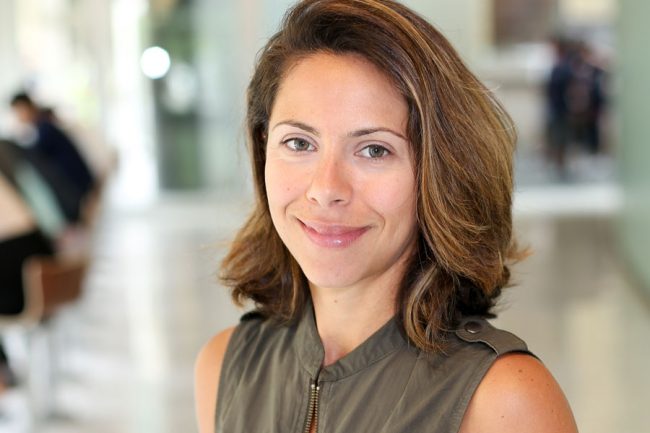
To: Members of the Faculty of Applied Science and Engineering
From: Christopher Yip, Dean
Date: June 28, 2023
Re: Appointment of Chair, Civil and Mineral Engineering
I am pleased to announce the appointment of Professor Marianne Hatzopoulou (CivE PhD 0T8) as Chair of the Department of Civil & Mineral Engineering (CivMin) for a five-year term beginning on July 1, 2023, and ending June 30, 2028.
Professor Hatzopoulou joined CivMin in 2015 as an Associate Professor and was promoted to full Professor in 2020. In 2021, she was on a team which received the NSERC Brockhouse Canada Prize for Interdisciplinary Research in Science and Engineering, and in 2022 as an alumna (CivE PhD 0T8), she received the U of T Engineering Alumni Network 2T5 Mid-Career Achievement Award. Marianne is a Tier 1 Canada Research Chair in Transport Decarbonization and Air Quality, and has authored more than 150 refereed journal papers in the area of transportation, air quality and greenhouse gas emissions. She is also an associate editor of the journal Transportation Research Part D: Transport and the Environment.
Please join me in congratulating Marianne on her appointment and wishing her a rewarding journey for her term.
I extend my deep appreciation to the following members of the Advisory Committee in this search for their time and thoughtful input:
Kelly Lyons, Professor and Acting Vice Dean Research and Program Innovation, SGS
Khandker Nurul Habib, Professor, Civil & Mineral Engineering
Robert Andrews, Professor, Civil & Mineral Engineering
John Harrison, Professor, Civil & Mineral Engineering
Kamran Esmaeili, Associate Professor, Civil & Mineral Engineering
Susan Andrews, Professor, Civil & Mineral Engineering
Daniel Posen, Assistant Professor, Civil & Mineral Engineering
Ramin Farnood, Professor and Chair, Chemical Engineering & Applied Chemistry
Sean Thomas, Professor and Associate Dean Research, John H. Daniels Faculty of Architecture, Landscape and Design
Aly Abdelaziz, Graduate Student, Civil & Mineral Engineering
Alec Gilvesy, Undergraduate Student, Civil & Mineral Engineering
Michelle Deeton, Director Finance & Administration, Civil & Mineral Engineering
I also would like to take this opportunity to extend gratitude on behalf of the Faculty to Professor Brent Sleep, who served as the Chair of CivMin since July 1, 2013. Under Brent’s leadership, the department’s name changed to reflect the synergies between civil and mineral engineering education and research, graduate enrolment and research funding increased, unique partnerships flourished and several ambitious infrastructure projects were completed. Notably, during Brent’s second term as Chair, the site of U of T’s Camp at Gull Lake was renovated extensively, building on a legacy that is more than 100 years old. The impact of Brent’s leadership will be felt by the entire U of T Engineering community for years to come.
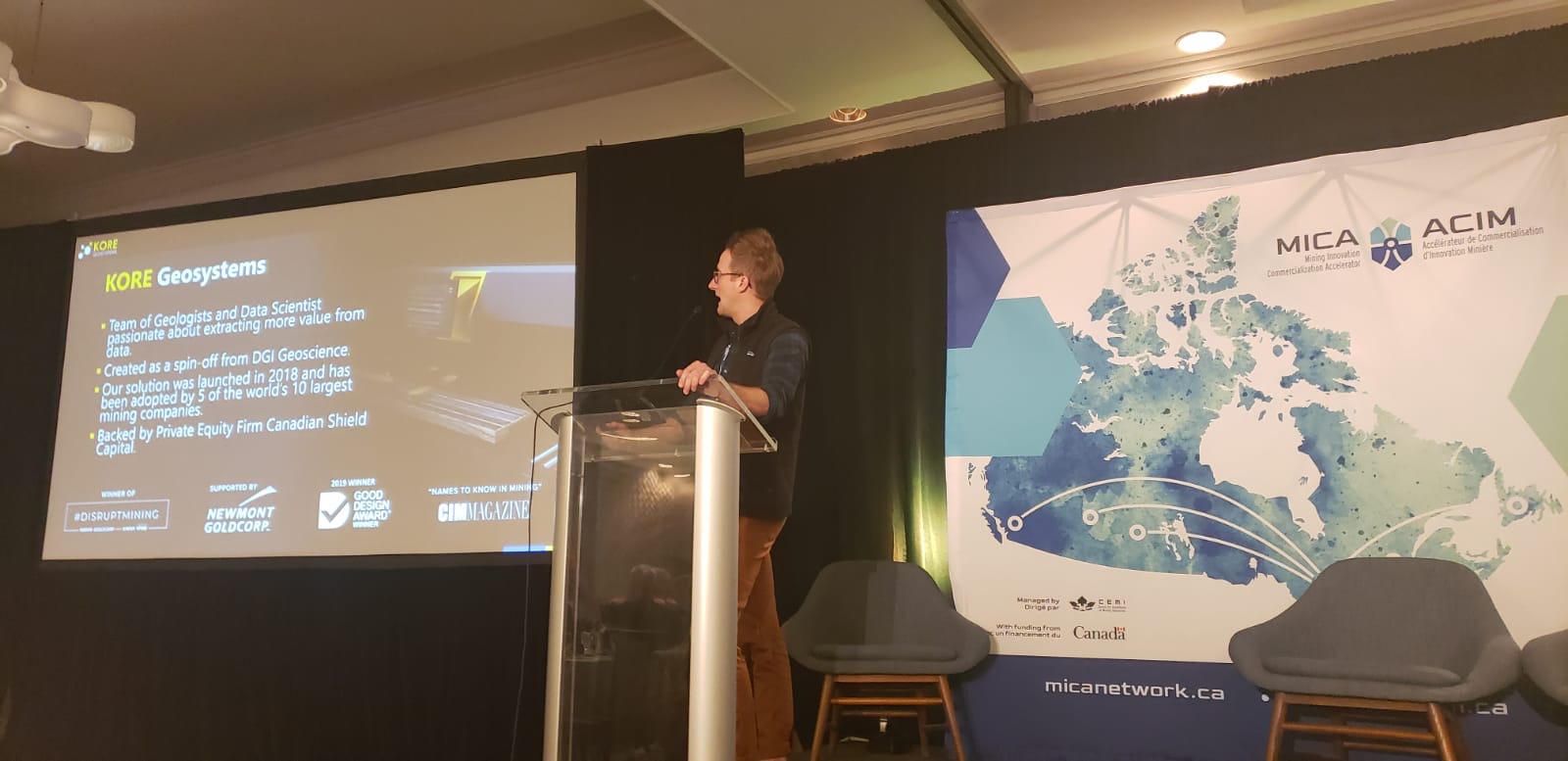
KORE Geosystems, one of whose founders is a CivMin professor and alumnus, has received federal funding of $1 million towards an innovative process in the mining sector. The proposed innovation involves artificial intelligence (AI) automation in the evaluation of examining and logging core samples from exploration operations, solving one of the largest bottlenecks in the industry.
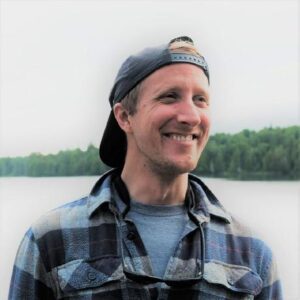
At the recent Mining Innovation Commercialization Accelerator (MICA) Network conference, held in Toronto on Thursday, June 22, Professor Sebastian Goodfellow (MIE MASc 1T0, CivE PhD 1T5) presented for KORE. His proposal, titled “AI For Everyone: Accelerating core logging using a novel geologist-in-the-loop AI platform” requested $1 million towards the total project cost of $8 million. In all, the federal government presented 24 proposals with more than $15 million in funding, out of the more than 80 submissions.
Mining companies spend an exorbitant amount of money drilling, then cataloguing the details of the core samples. Some mine sites, known to drill 250,000 metres of samples each year, can spend hundreds of dollars per metre. “Drill core is an essential data source that informs critical processes throughout the mining lifecycle,” says Goodfellow. “A major industry challenge is that logging teams cannot accommodate the pace of drilling, resulting in massive backlogs representing unrealized investments and delayed decision-making.”
With this announcement positioning the funding as placing the environment and Canada in more competitive positioning, the release claims, “The Government of Canada is investing in innovative mining solutions that will better equip Canada’s mining sector to become a major industrial player in the new green economy.”
As nations look towards embracing a green economy, including the reduction of carbon emissions, large amounts of minerals such as graphite, copper, lithium and nickel will be needed to power the green and digital economy at home and around the world. The result is the need to drive and embrace efficiencies in the mining sector, both in labour, energy expenditure, timeliness and beyond.
Up for overcoming hurdles with this unique AI solution, Goodfellow explains, “It is challenging to grow logging teams because geologists are in short supply for reasons related to the great resignation, work-life balance, and an aging workforce.”
“If the team can scale, the increase in the team’s size results in a significant drop in consistency. The pace and consistency of logging represent one of the largest bottlenecks in the mining lifecycle. Our solution aims to improve productivity, eliminate backlogs, improve the consistency of logs, and enable remote work.”
Using an AI process to automate the examination, measuring and evaluation of specimens can easily replace the mundane, manual and traditional methods. First, a consistent method of imaging the samples in a tray is accomplished via standardized lighting and angle. Then the AI can scan the images and place holders to mark measurements on a screen – each catalog can be manually adjusted by an operator later if desired. All of the digitized images are accessible for reference and can be viewed remotely at any time.
Goodfellow notes the entire process is dependent upon human expertise, “Our AI models are built using a geologist-in-the-loop continuous learning approach, which allows the model to achieve greater accuracy in a drastically reduced amount of time by allowing the model to choose the data from which it learns. By incorporating geologists into the model training loop, the model is guided and corrected throughout its “life” building trust and drastically improving the scalability and impact of this technology. “
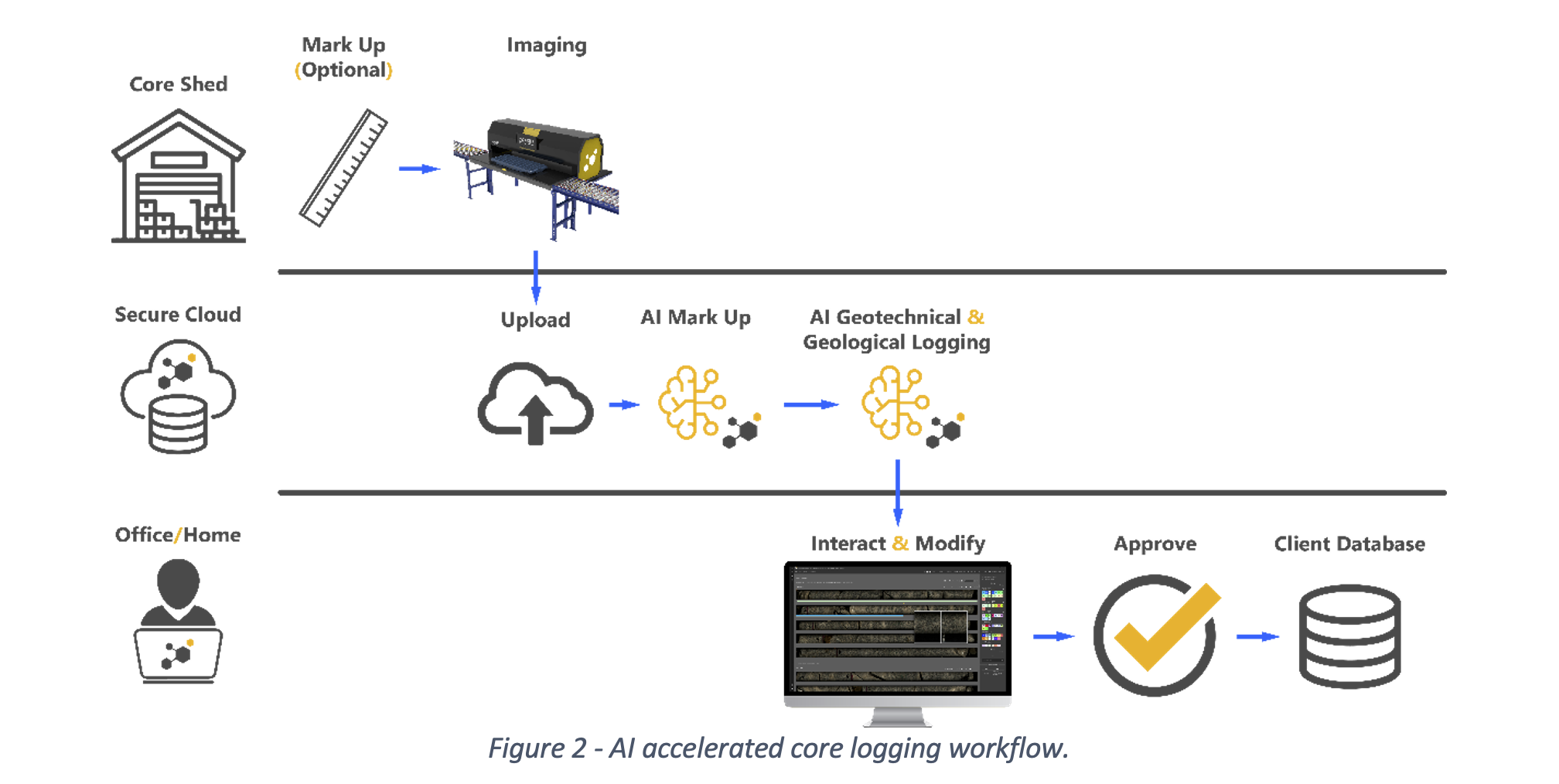
MICA’s call for proposals invited applicants to submit projects to position Canada as a global leader in mining innovation by accelerating the commercialization of made-in-Canada groundbreaking technologies.
Applications came from across Canada with projects spanning the four technical themes of MICA:
- Increase mine production capacity, at a lower cost.
- Reduce mining energy consumption and greenhouse gas emission
- Implement smart, autonomous mining systems.
- Reduce environmental risk and long-term liabilities.
According to a release by the federal government, MICA’s funding will allow the recipients to create new tools which will reduce carbon emissions, expand the use of autonomous driving for underground mining, and result in overall efficiencies enabling our domestic industry to become safer for personnel and the environment.
By Phill Snel
Professor Sebastian Goodfellow was recently featured in a U of T Magazine article, Tremors of the heart, about a collaborative project with clinicians using AI to detect heart rhythm abnormalities at Toronto’s Hospital for Sick Children (SickKids).
CivMin’s Professor Brent Sleep completes his role as two-term Chair
Professor Brent Sleep completes his role as Chair of the Department of Civil & Mineral Engineering (CivMin) as of June 30, 2023. We take a look back at the milestones and fond memories of his past 10 years at the helm, from 2013 to 2023.
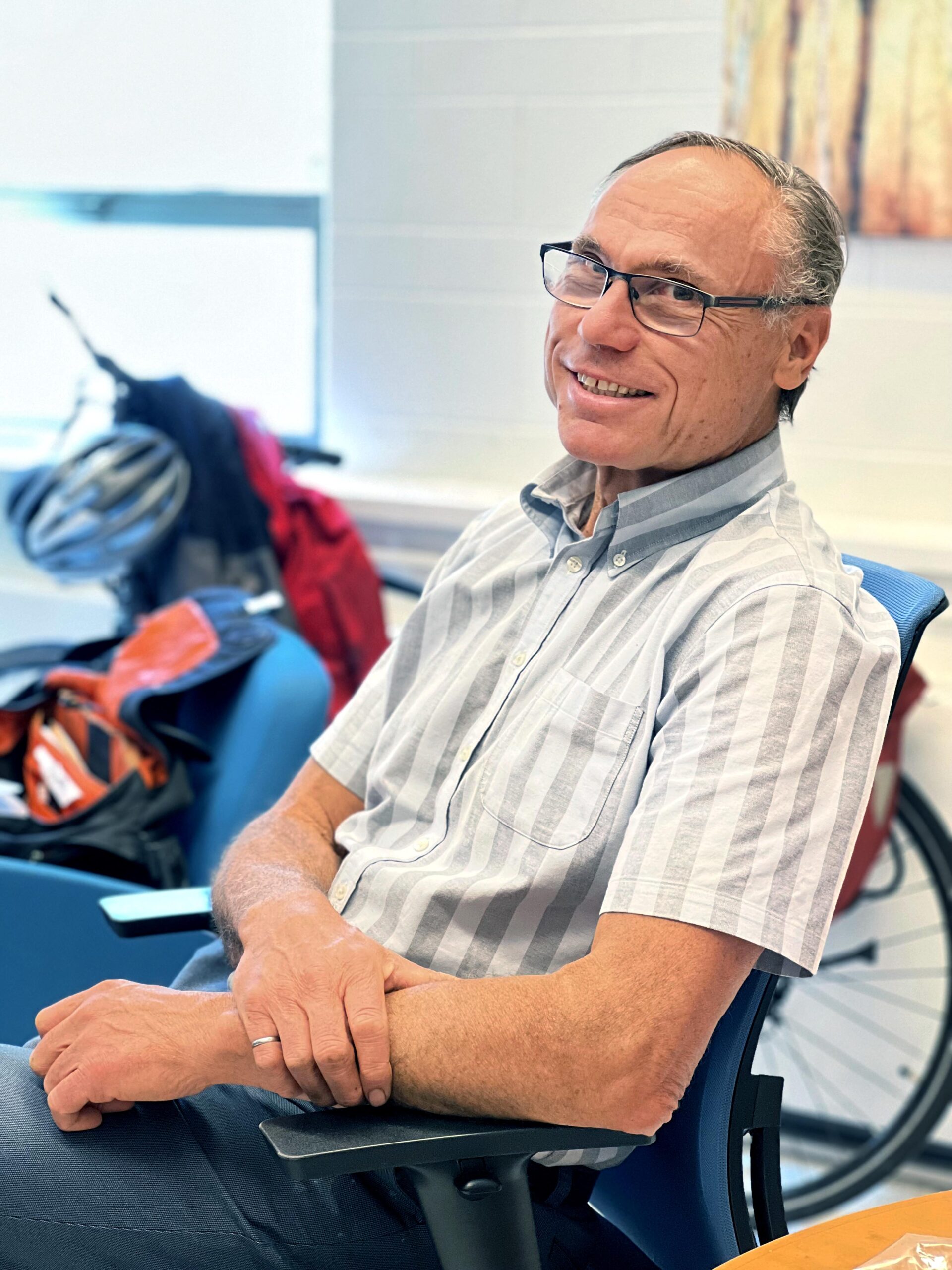
A familiar sight on St. George Street, along the U of T campus, many weekday mornings is a cyclist making a usual commute. This commuter, often sporting a red jacket, is headed for a corner office in the Galbraith Building, home to Engineering’s main entrance and CivMin’s leadership offices, specifically Office of the Chair.
Prof. Brent Sleep became Chair July 1, 2013 after first serving as associate chair, research from 2008-2012 and as acting director of the Lassonde Institute of Mining in 2012-2013. He joined us initially as an assistant professor in 1990, was promoted to associate professor in 1995 and to full professor in 2000.
Under his leadership, the Department changed its name from what had long been the Department of Civil Engineering (CivE), to the Department of Civil & Mineral Engineering in 2018 to better reflect the interdisciplinary aspects of the combined teaching and research fields, recognizing the breadth of experience of its faculty members and its strategic vision.
“We also rewrote the Constitution to make the Civil and Mineral programs more parallel to each other,” reflects Sleep on the deeper aspects of the name change. “We changed the structure so Mineral would have an associate chair and the Mineral Program would have equal representation on the various committees, particularly the undergraduate studies committee.”
“I’ve been able to hire so many new faculty. With 17 new professors over the past 10 years, 15 so far and two to be announced, it’s meant a great many interviews, meetings and letters. It’s been absolutely fantastic to bring in so many faces to CivMin,” he says with a familiar grin. In fact, seven of the last 15 new faculty members have been women, representing a rapid change for the Department.
Don’t forget to enjoy your time.
“Time management,” shares Sleep when asked about passing along advice to a new leader. “It’s really a full-time job, but you also want to keep your research program going and have time for your graduate students. But, also, don’t forget to enjoy your time too.
In reminiscing about the many socializing and networking events while the Chair, he says, “There’s a lot of great people, events and experiences. I’ll miss the opportunities to meet with a great many of our alumni, Industry Advisory Board and more – although I still hope to keep up connections through future department networking and social events”
You realize just how important the staff in the Department are in running it so well.
He’s quick to credit those who quietly keep the daily hum of the department going, “One of the things you realize is just how important the staff in the Department are in running it so well. All the directors, like Michelle, Nelly, Mel, and everybody else who’s in the Student Services team, the GB105 team, the Business Office, and our technical staff working away in labs and staff offices. There’s so many people who work in this department, in addition to the faculty. I’d especially like to thank Teresa [Miniaci] for all her fantastic support during my time as Chair”.
Many major milestones for CivMin have included the new facilities at the U of T Camp on Gull Lake – including the modern and flexible-use HCAT Bunkhouse and MacGillivray Common Room. Sleep credits former Chair, Professor Emeritus Brenda McCabe, for her pivotal role in this project, even though it was completed during his term.
Additionally, though it’s been years in conception, and just now being built, the new Adjustable Multidimensional (AMD) testing device in the Structural Testing Facilities (STF) to be installed on the Galbraith Building’s new strong floor will be a legacy of his time.
During his term, Sleep has renewed much more involved efforts to include industry and alumni in the Department. He reinvigorated the Civ Industry Advisory Board (IAB), now led by Chris Andrews as Chair, as well as initiated the Lassonde Mineral Engineering Program Advisory Board (LMEP AB) which held its inaugural meeting April 2023.
When asked why he chose to run for a second term as CivMin Chair, Sleep simply states, “I still had so much to do. There were things I had not done in the first term I still wanted to do. And I felt like I was still learning the other things involved in the role.”
Sleep did take a small gap between stints as Chair, taking a research leave for six months with Prof. Heather MacLean assuming the role as Interim Chair from January to June of 2019.
Recently recognized at a Faculty Council meeting, our outgoing Chair had further accomplishments listed. Among them:
- He received his BASc and MASc degrees in chemical engineering and his PhD in civil engineering (water resources) from the University of Waterloo.
- Sleep has also served on many departmental and Faculty committees. Since 2021, he has been faculty advisor to the U of T chapter of Engineers in Action (EIA), an international non-profit organization whose mission is to support development of sustainable systems and infrastructure with underserved communities, local experience and global partners.
- He was named Senior Fellow, Massey College (2018-2021), Fellow of the Canadian Society for Civil Engineering (2017) and Fellow of the Engineering Institute of Canada (2012) among other awards and honours.
- His research is dedicated to developing innovative methods for remediation of soil and groundwater contamination, with a focus on organic contaminants. He has made outstanding contributions to the profession through editorships in leading journals in the water resources field, and active involvement on important panels and committees.
Please join in thanking Prof. Sleep for his outstanding contributions to the Department and to the Faculty.
June 23, 2023 | The Globe and Mail